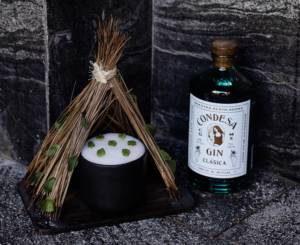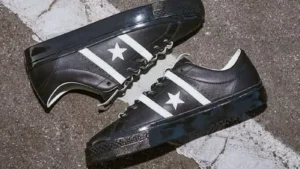

In a fashion industry that is becoming increasingly performative, cyclical, and saturated by corporate storytelling, Weekday’s Spring/Summer 2025 campaign, titled Everything Now – Leave Nothing Unexpressed, arrives not just as a new seasonal launch but as a cultural inflection point. From its early days as a minimal storefront in Stockholm to its current role as one of Scandinavia’s most stylistically conscious voices, Weekday has evolved far beyond a label. This campaign asserts that evolution with clarity, courage, and an understanding of what drives the modern, globally attuned youth consumer.
This is not merely about spring-ready silhouettes or warm-weather textures. It is about expanding the definition of what a brand can be in 2025. Everything Now is less of a title and more of a manifesto—one that collapses the borders between fashion, identity, media, and expression, embracing an all-at-once philosophy that captures the spirit of our hyper-connected age.
A Movement Born From Stockholm’s Streets
Founded in 2002 in Stockholm, Weekday has consistently struck a delicate balance between directional fashion and accessible pricing. It earned early cult status for its slim jeans, oversized basics, and commitment to minimalist cool—a sort of Scandinavian blueprint that borrowed from underground culture as much as it did from global runways.
But where many brands fossilize within their founding decade, Weekday has proven resilient and flexible. Its Spring/Summer 2025 campaign not only shows that adaptability but positions it as a leader in retail reinvention. The brand isn’t pivoting away from fashion—it’s doubling down on it by extending the terrain in which fashion lives.
The new campaign is anchored by a creative multi-space concept, launched in Weekday’s Stockholm flagship. This isn’t a pop-up or a seasonal build-out. It is a permanent reimagination of the store as a cultural node—a place where fashion intersects with curated vintage, independent drops, experimental installations, and community-forward art. It’s where Monki, Cheap Monday’s archival ethos, and upcycled secondhand finds cohabitate, creating a multidimensional wardrobe offering reflective of how today’s youth actually shop: eclectically, sustainably, and on impulse.
The Visual Language of “Everything Now”
Visually, Everything Now presents a confident break from minimalist uniformity. The campaign features Weekday’s creative muses—poets, dancers, photographers, musicians—captured not in forced editorial gloss, but in raw, candid vignettes. Shot against blank walls, city scaffolds, overexposed landscapes, and bedroom interiors, the lookbook is more a moodboard than a catalog.
Each image is styled with intent but remains emotionally democratic: cargo skirts, sheer mesh tops, fragmented denim, and stretch-fabric tube dresses worn with beat-up sneakers or steel-capped boots. It’s a wardrobe designed to morph with its wearer rather than dictate identity. Colorways are mostly neutral—grays, washed olives, desert browns—but frequently punctuated by aggressive neons or painterly blues. Shapes oscillate between the hyperfitted and the intentionally ill-proportioned.
There’s no single aesthetic throughline, and that’s precisely the point. This campaign isn’t selling one idealized body or uniform—it’s proposing a language of clothing as collage, where textures, eras, and attitudes co-exist on a single body. Weekday embraces inconsistency as a generational principle.
Hybridization: Retail as Ecosystem
More significant than the visual styling is Weekday’s reframing of the store as an experiential collage. Where traditional retail still flirts with exclusivity or superficial digitization, Weekday responds with a democratized spatial remix. Their flagship relaunch includes modular display zones, creative residencies, open format racks where second-hand pieces cohabit with newly dropped capsules, and embedded spaces for independent artists to show or sell.
This echoes Gen Z’s refusal to shop within silos. Today’s consumers aren’t browsing a single trend—they’re toggling between Depop, Discord fashion subreddits, archival Instagram pages, and TikTok thrift flips. Weekday acknowledges this fluidity by creating a unified space that feels like an in-person version of those moodboard rabbit holes. You don’t just “shop” Weekday—you experience its evolving texture.
The presence of Monki (also under the H&M Group umbrella) and archived Cheap Monday finds isn’t about resurrecting nostalgia—it’s about acknowledging brand history without fetishizing it. By folding multiple identities into one experience, Weekday claims space as a cultural lab, where past and future exist simultaneously.
Artistic Inclusion and Identity Expression
Beyond apparel, Everything Now functions as a platform for individual narratives. Weekday’s campaign features spoken word snippets and soundtracks produced by collaborating artists. The campaign video, rather than a singular edit, takes the form of overlapping voiceovers and shifting visuals. There are poems about gender fluidity, process-oriented dance montages, studio vignettes of screen printers and graphic designers mid-project. The campaign is, in essence, an open-source archive of what it means to express now.
This resonates deeply in an era where fashion brands are expected to do more than sell—they must also host, platform, and listen. The youth audience is tired of synthetic slogans and tokenistic representation. They want honesty, even if it’s messy. Weekday delivers on this
No comments yet.








